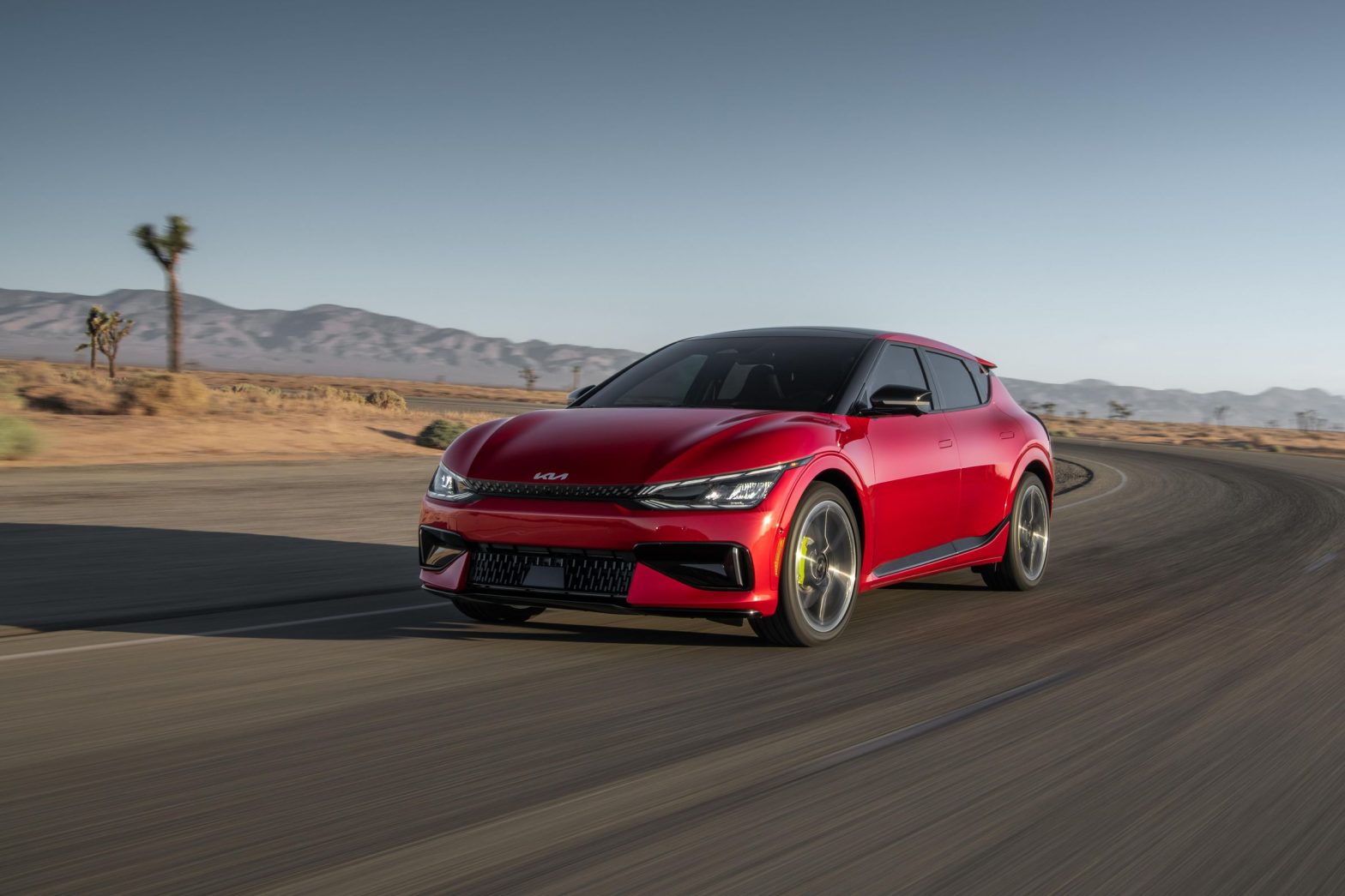/
The 2023 Kia EV6 will start at $49,795, including a $1,295 destination charge, which is over $7,000 more than the 2022 model. It’s the latest EV to get a significant price hike. Say it with me now: EV prices are going in the wrong direction.
:format(webp)/cdn.vox-cdn.com/uploads/chorus_asset/file/24182284/627716__1_.jpg)
Kia America just announced the 2023 pricing for the EV6, and much like many EVs before it, it’s going in the wrong direction.
Next year’s EV6 will start at $49,795, including a $1,295 destination charge — a 16 percent price hike, or $7,100 more than last year’s model. Previously, the Light base model EV6 started at $42,695, including the destination charge. (That model has now been discontinued and replaced with the Wind RWD trim.)
And that’s not taking into account any dealer markups or options that would likely end up pushing the Kia EV6’s price north of $50,000, which is dangerously close to luxury vehicle levels of price. (Kia isn’t jacking up the price for nothing, though: the 2023 EV6 is getting a pretty significant range boost.)
Inflation sucks, but inflation in the EV sector is especially depressing for a number of reasons. We already have a plethora of luxury EVs from which to choose, while the number of midtier plug-in cars is growing smaller each day. Transportation is the largest source of greenhouse gas emissions in the US, and we need EVs to be cheaper in order to drive up sales and replace the polluting cars currently clogging the road.
The US government under President Joe Biden has said that fighting climate change is a top priority, but it has put a lot of its eggs in one basket with its policies promoting EV adoption. If EVs are too expensive for most people to afford, as they are now, where does that leave our effort to prevent global temperatures from rising 1.5 degrees Celsius above preindustrial levels, as experts warn we must do to prevent the worst effects of climate change?
We were promised affordable EVs, but instead, we’re getting a lot of models that aspire to be affordable but keep moving out of reach. Ford said the F-150 Lightning would start “under $40,000”; it now starts at around $59,000. Other affordable models, like the Mustang Mach-E and Hyundai Ioniq 5, have also shot up in price. Tesla jacked up the prices of its entire lineup by as much as $6,000.
:format(webp)/cdn.vox-cdn.com/uploads/chorus_asset/file/23366599/ahawkins_220221_5115_0007.jpg)
Used EV prices were also rising at a worrisome rate, with one analysis noting that used electric car prices saw a year-over-year increase of 54 percent, while gas-powered cars were up just 10 percent. (Some used EV prices are still higher than the same model new.)
The reason EV prices have shot up at such a staggering rate is multifaceted. There’s a global chip shortage, which caused huge production problems for the industry and sent vehicle sales tumbling. And perhaps counterintuitively, there are high gas prices, which caused car buyers to snatch up all the EVs they could find at the dealer lots, leading to a steep drop in inventory. Decades-high inflation certainly didn’t help the situation.
There are still affordable EVs. The Chevy Bolt EV ($25,600) and EUV ($27,200) as well as the Nissan Leaf ($28,040) are still rocking bargain-basement price stickers. And Chevy has promised that the forthcoming Equinox EV will start at “around $30,000” — though I wouldn’t be shocked if it ended up closer to $35,000.
:format(webp)/cdn.vox-cdn.com/uploads/chorus_asset/file/24015537/226268_CHEVY_EV_LINEUP_PHO_ahawkins_0001.jpg)
But, of course, those prices are deceptive because the prices are nearly always higher when the customer drives off the lot. The Chevy Bolt, for instance, was selling for almost one-third more this summer, at $34,874 on average, according to Edmunds. Same goes for the Leaf, which sold for an average of $34,000.
Democrats in Congress say they understand the urgency of decarbonizing the transportation sector and have responded by passing the Inflation Reduction Act, which includes a $7,500 tax credit for new EVs and a $4,000 credit for used ones (as long as they are produced in North America and use parts mostly from the US and its trading partners).
But the tax credit could end up disqualifying many EVs thanks to strict supply chain requirements. It’s not clear whether it will have any meaningful impact on EV sales in the near term. And California voters just rejected a ballot measure to subsidize EVs for low-income residents by raising taxes on high earners.
EVs accounted for 20 percent of new car sales in the state, the most in the nation, but apparently expanding the pool of car buyers who can afford these vehicles is a bridge too far.
